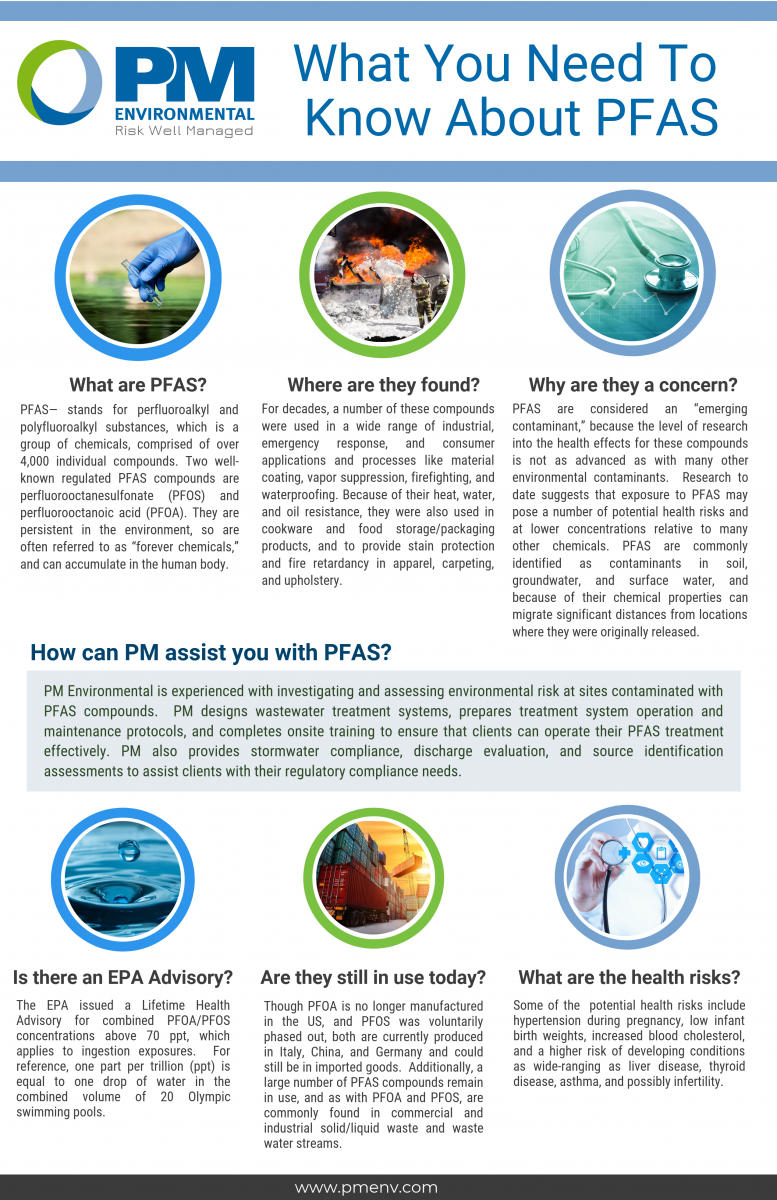What You Need To Know About PFAS {Infographic}
For decades, Perfluoroalkyl and polyfluoroalkyl substances (PFAS), comprised of more than 4,000 individual compounds, including two well known regulated compounds perfluorooctanesulfonate (PFOS) and perfluorooctanoic (PFOA), were used in a range of industrial and consumer applications and processes like plating, material coating, lubrication, vapor suppression, cookware, food storage, packaging products, carpet and upholstery, fire fighting products, and stain protection.
While PFOA and PFOS are no longer produced in the United States, they are both currently manufactured in Italy, China and Germany, and could still be in imported goods. A large number of other PFAS compounds do still remain in use and are commonly found in commercial and industrial waste.
PFAS compounds, referred to as “forever chemicals” due to their persistent nature in the environment, can accumulate in the human body. Research into the health effects for these compounds is not as advanced as other environmental contaminants even though current research suggests a number of potential health risks. Some of these potential health risks include hypertension during pregnancy, low infant birth weights, and increased blood cholesterol.
Currently, the EPA has issued a Lifetime Health Advisory for combined PFOA/PFOS concentrations to 70 parts per trillion (ppt). While helpful, these are not enforceable regulatory policies. In many instances, states have taken to developing their own regulatory standards for PFAS.
While PFAS have received a lot of media coverage, understanding the facts can be difficult. We’ve put together a quick reference guide to cut through what you really need to know and how PM Environmental can help.
With PFAS awareness on the rise, having an environmental consultant who is experienced with investigating and assessing environmental risk at sites contaminated with PFAS compounds is critical. PM designs wastewater treatment systems, prepares treatment system operation and maintenance protocols, and completes onsite training to ensure clients can operate their PFAS treatment effectively.
Publication Details
Date
November 20, 2018




